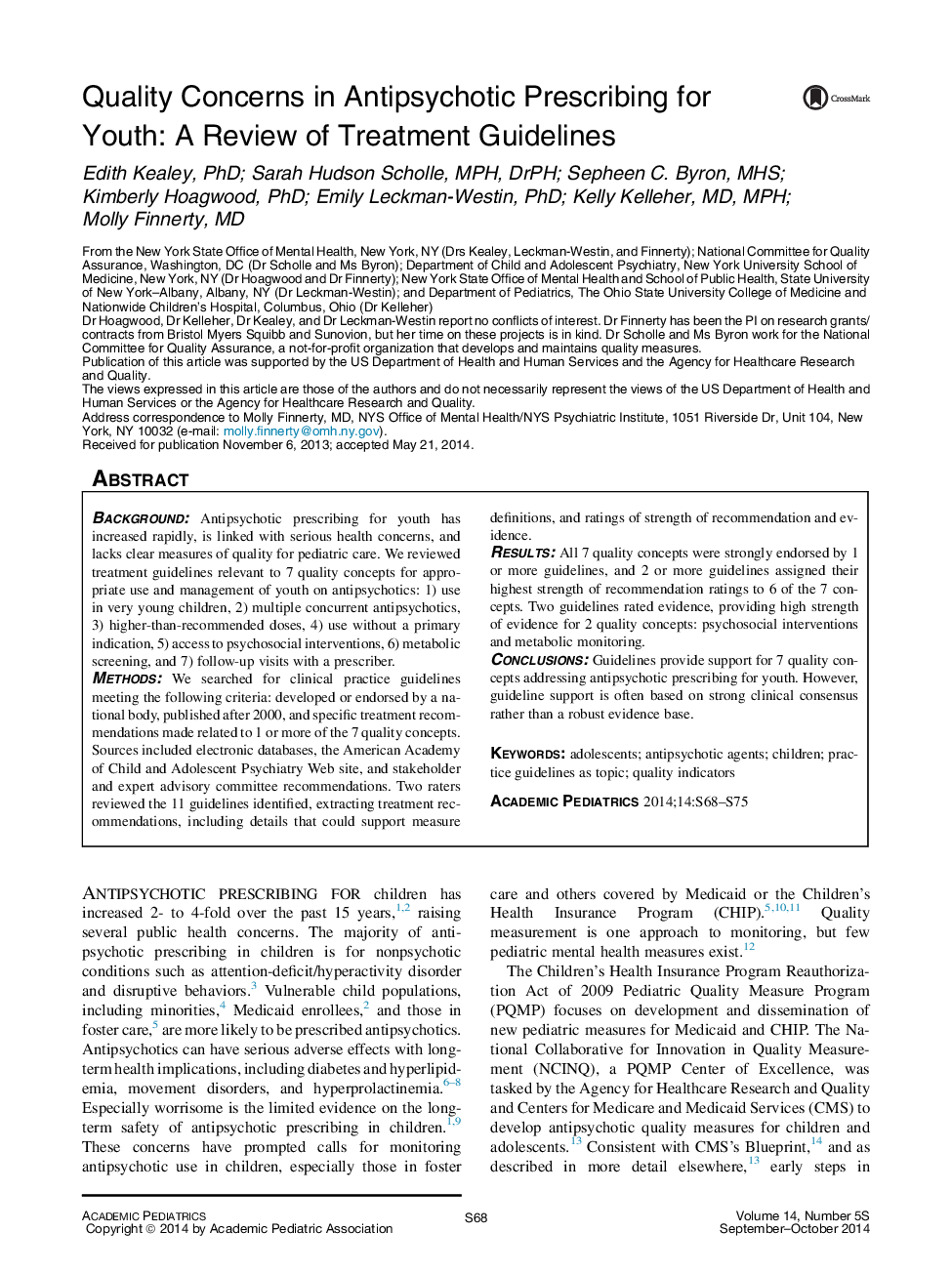| Article ID | Journal | Published Year | Pages | File Type |
|---|---|---|---|---|
| 4139397 | Academic Pediatrics | 2014 | 8 Pages |
BackgroundAntipsychotic prescribing for youth has increased rapidly, is linked with serious health concerns, and lacks clear measures of quality for pediatric care. We reviewed treatment guidelines relevant to 7 quality concepts for appropriate use and management of youth on antipsychotics: 1) use in very young children, 2) multiple concurrent antipsychotics, 3) higher-than-recommended doses, 4) use without a primary indication, 5) access to psychosocial interventions, 6) metabolic screening, and 7) follow-up visits with a prescriber.MethodsWe searched for clinical practice guidelines meeting the following criteria: developed or endorsed by a national body, published after 2000, and specific treatment recommendations made related to 1 or more of the 7 quality concepts. Sources included electronic databases, the American Academy of Child and Adolescent Psychiatry Web site, and stakeholder and expert advisory committee recommendations. Two raters reviewed the 11 guidelines identified, extracting treatment recommendations, including details that could support measure definitions, and ratings of strength of recommendation and evidence.ResultsAll 7 quality concepts were strongly endorsed by 1 or more guidelines, and 2 or more guidelines assigned their highest strength of recommendation ratings to 6 of the 7 concepts. Two guidelines rated evidence, providing high strength of evidence for 2 quality concepts: psychosocial interventions and metabolic monitoring.ConclusionsGuidelines provide support for 7 quality concepts addressing antipsychotic prescribing for youth. However, guideline support is often based on strong clinical consensus rather than a robust evidence base.
